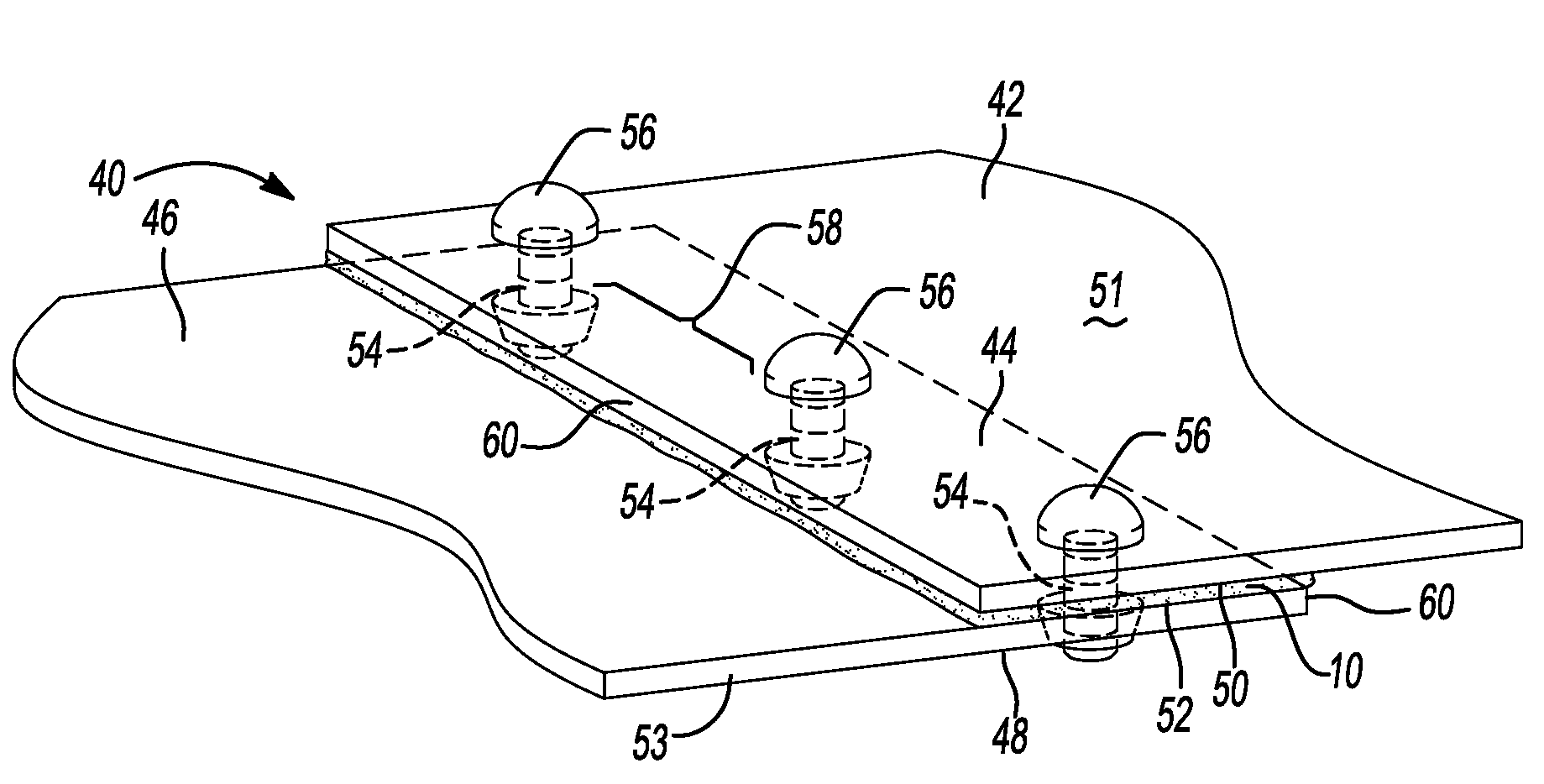Mechanical method for improving bond joint strength
- Summary
- Abstract
- Description
- Claims
- Application Information
AI Technical Summary
Benefits of technology
Problems solved by technology
Method used
Image
Examples
examples
[0066]The sealant material including the first component (e.g., beads) may be applied to a joint (with at least one substrate near or around one or more fasteners such as a rivet) to assist in maintaining the substrate(s) in position and optionally sealing the joint from the surroundings such as water, air, or otherwise leakage.
[0067]It is believed that the sealant material of the present invention (e.g., with the first component) resulted in increased slip-load forces relative to previous sealant materials (e.g., with or without spacer materials) used in similar joint configurations as determined from lap shear testing. Slip load forces being defined as the amount of force at which a load drops off (e.g., point at which movement occurs by one substrate relative to another while in shear). Typically the substrates may be joined by mechanical means such as fasteners, chemical means such as adhesives, or both. Accordingly, it is appreciated that joints resulting in lower slip loads, p...
PUM
| Property | Measurement | Unit |
|---|---|---|
| Length | aaaaa | aaaaa |
| Length | aaaaa | aaaaa |
| Length | aaaaa | aaaaa |
Abstract
Description
Claims
Application Information
 Login to View More
Login to View More - R&D
- Intellectual Property
- Life Sciences
- Materials
- Tech Scout
- Unparalleled Data Quality
- Higher Quality Content
- 60% Fewer Hallucinations
Browse by: Latest US Patents, China's latest patents, Technical Efficacy Thesaurus, Application Domain, Technology Topic, Popular Technical Reports.
© 2025 PatSnap. All rights reserved.Legal|Privacy policy|Modern Slavery Act Transparency Statement|Sitemap|About US| Contact US: help@patsnap.com



